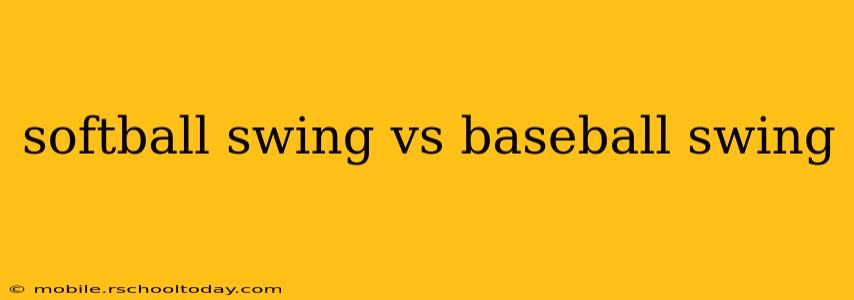The seemingly similar swings in softball and baseball actually harbor significant differences. While both sports involve hitting a ball with a bat, subtle yet crucial variations in technique, grip, and overall approach exist due to the differences in ball size, weight, and pitching styles. Understanding these differences is key for players transitioning between the two sports or simply wanting to improve their game.
What are the main differences between a softball and baseball swing?
The core distinction lies in the objective: softball emphasizes power hitting and a more upward swing path, while baseball prioritizes contact, bat speed, and a flatter, more level swing. This difference stems from the ball itself. A softball is larger and softer than a baseball, making it easier to lift into the air. Conversely, a baseball's smaller size and harder composition necessitate a different approach to generate solid contact.
How does the grip differ between softball and baseball?
The grip also varies significantly. Softball players often employ a wider grip, allowing for more power generation through a larger arc of motion. This wider grip helps compensate for the larger, lighter ball, making it easier to generate enough force for a long hit. Baseball players, conversely, typically use a narrower grip to enhance bat control and precision, allowing for a quicker swing and better contact with the smaller, harder baseball. The goal in baseball is often to hit to all fields, demanding greater accuracy.
Does the bat type affect the swing?
Absolutely. Softball bats are generally larger and lighter than baseball bats, further contributing to the power-oriented swing. The larger sweet spot on a softball bat also allows for some forgiveness on off-center hits. Baseball bats, on the other hand, are typically thinner and heavier, demanding greater precision and control. This weight difference necessitates a slightly different approach in generating swing speed and power. The material of the bat also impacts the swing, with composite and alloy softball bats offering different levels of flex and power compared to wooden or metal baseball bats.
What is the difference in swing path?
The swing path is where the most significant visual difference becomes apparent. A softball swing often involves a more pronounced upward arc, aiming to loft the ball in the air and maximize distance. This high trajectory is less penalized in softball due to the larger outfield and generally shorter distances to the fences. The baseball swing, in contrast, aims for a flatter, more level trajectory, prioritizing line drives and ground balls for higher batting averages and more consistent base hits.
What about the bat speed?
While both sports value bat speed, the emphasis differs. In baseball, maximizing bat speed is crucial for hitting the harder, faster pitches. A fast, compact swing is prioritized. In softball, while bat speed contributes to power, the emphasis is more on generating power through a larger swing arc and leveraging the bat's weight.
Is there a difference in the follow-through?
Yes, the follow-through also reflects the differences in swing style. The softball swing often concludes with a high finish, mirroring the upward swing path. The baseball swing usually features a more level follow-through, reinforcing the flatter swing plane. A consistent and controlled follow-through is vital for both sports in maintaining balance and generating power efficiently.
By understanding these key distinctions, players can better tailor their approach and technique to excel in either softball or baseball, regardless of their experience level. The nuances in swing mechanics are significant and directly impact a player's effectiveness.
